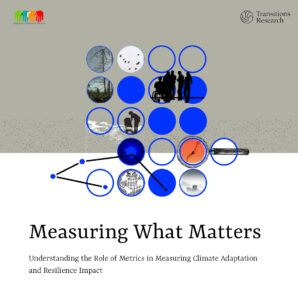On February 13, 2019, the lives and livelihoods of our forest keepers were threatened when the Supreme Court passed an order directing the eviction of millions of forest-dwellers after their claims for forest land rights were rejected under the Forest Rights Act of 2006. Their rights have been further challenged with the proposed Indian Forest (Amendment) Bill, 2019, which if passed and enacted will not only make tribal communities vulnerable but will also pose a threat to the conservation of our forests.
Tribal and traditional forest-dwelling communities across India have lived in forests for generations, protecting our forests and its biodiversity. Being an integral part of the forest ecosystem, the forest keepers have a critical role in forest governance, development and its conservation. Driving them away would could impact the conservation of the forests and loss of biodiversity.
In law, the customary rights of the traditional forest-dwelling communities were not recognised for a long time. Their rights were only acknowledged in 2006 after the Parliament passed the Scheduled Tribes and Other Traditional Forest Dwellers (Recognition of Forest Rights) Act (hereinafter Forest Rights Act). However, the symbiotic relationship between tribal people and forests were first realised under the National Forest Policy, 1988 which also recognized the role of tribal communities in the protection, regeneration and development of forests.
Forest governance in India is another set of complex issues which revolve around archaic colonial laws, stringent bureaucratic processes, changing government policies and influence of industrial interests. In this piece, while documenting the curious case of traditional forest-dwellers of India, I argue that the Forest Rights Act is pivotal for forest conservation and environmental protection.
Forest Rights Act
The Forest Rights Act aims to redress the “historical injustice to the forest-dwelling Scheduled Tribes” by way of recognising their property rights to land, common occupation to use non-timber forest produce and by realising the collective community rights of control and management of forests land.
To be granted a right under the Forest Rights Act, an individual must demonstrate that, they they have been and continue to either: (a) reside on forests or forest lands, or (b) dependent on forest produce for their livelihood. The legislation recognised two classes of persons to be eligible to claim rights under the law: (i) forest-dwelling Scheduled Tribes, and (ii) other traditional forest dwellers – communities who have been dependent on forests for a minimum of 75 years.
However, the Forest Rights Act has not been fully implemented to this date. The implementation has been difficult as in many aspects it has failed to align with the goals and objectives of the Indian Forest Act, 1927 (IFA, 1927) and Wild Life (Protection) Act, 1972 (WLPA, 1972). While the IFA, 1927 gave the forest departments sizeable discretionary power in governance and administration of forest lands, the WLPA, 1972 aims to ensure ecological and environmental security and identification of strictly governed national parks and sanctuaries. These two legislations recognise the forest and wildlife bureaucracy with the rights of tribal communities finding no place.
Given this, the Forest Rights Act not only becomes a ground for conflict between wildlife conservationists and tribal communities but also leads to bureaucratic discord between the Ministry of Tribal Affairs and Ministry of Environment and Forests as the latter fears a loss of control over the subject.
At the Supreme Court of India
The constitutional validity of the Forest Rights Act was challenged by Wildlife First and other conservationists in 2008 (Wildlife First & Ors. v Ministry of Forest and Environments & Ors. [Writ Petition No. 109/2008]). The petitioners argued that the Act has led to deforestation and encroachment upon forest land. The conflict arose because the tenurial rights allotted by the forest departments were narrowed down and manifested as encroachment even as the traditional forest-dweller continued to live under the bureaucratic hammer of the forest departments.
As the legal battle unfolded over the last 12 years, the petitions which were originally filed to challenge the constitutional validity of the Forest Rights Act changed course to focus on the rights of tribal communities and traditional forest-dwellers. The Supreme Court took it upon itself to issue orders of eviction even before the central question of constitutional validity had been thoroughly debated, argued and decided.
To prevent encroachments in forest areas, the Supreme Court of India India on February 13, 2019 passed an interim order and directed the eviction of more than 1.8 million tribal families and traditional forest-dwellers – whose claims were rejected under the Forest Rights Act – from forest lands.
State governments mostly rejected the claims of the tribal and traditional forest-dwellers based on scrutiny by the Gram Sabhas – which were tasked to initiate the process of verification of claims over the land. Low awareness of Gram Sabhas on how to deal with the issue and lack of documentary proof by the poor and illiterate tribal population from the remote forest villages lead to the catastrophe.
However, later on February 28, 2019, the court stayed its earlier order of eviction which was passed ostensibly in the name of wildlife protection and directed authorities to enquire whether due process was followed by the Gram Sabhas and the state governments under the Forest Rights Act before rejecting the claims.
Nevertheless, the eviction order has created a sense of uncertainty and fear in the tribal communities.
The publication was first published by the authors under auspices of erstwhile Tandem Research.




